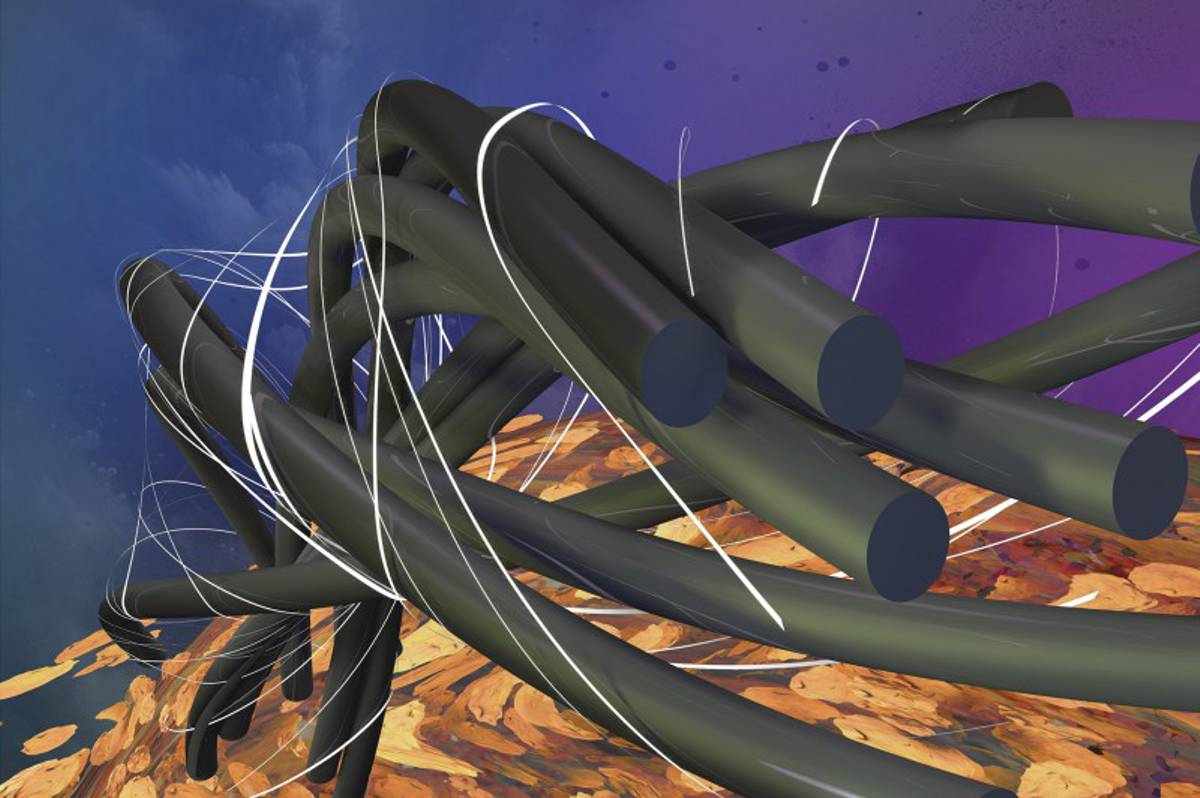Metal-organic Framework Materials could store Gases
Materials known as metal-organic frameworks (MOFs) have a rigid, cage-like structure that lends itself to a variety of applications, from gas storage to drug delivery. By changing the building blocks that go into the materials, or the way they are arranged, researchers can design MOFs suited to different uses.
However, not all possible MOF structures are stable enough to be deployed for applications such as catalysing reactions or storing gases. To help researchers figure out which MOF structures might work best for a given application, MIT researchers have developed a computational approach that allows them to predict which structures will be the most stable.
Using their computational model, the researchers have identified about 10,000 possible MOF structures that they classify as “ultrastable,” making them good candidates for applications such as converting methane gas to methanol.
“When people come up with hypothetical MOF materials, they don’t necessarily know beforehand how stable that material is,” says Heather Kulik, an MIT associate professor of chemistry and chemical engineering, and the senior author of the study. “We used data and our machine-learning models to come up with building blocks that were expected to have high stability, and when we recombined those in ways that were considerably more diverse, our dataset was enriched with materials with higher stability than any previous set of hypothetical materials people had come up with.”
MIT graduate student Aditya Nandy is the lead author of the paper, which appears today in the journal Matter. Other authors are MIT postdoc Shuwen Yue, graduate students Changhwan Oh and Gianmarco Terrones, Chenru Duan PhD ’22, and Yongchul G. Chung, an associate professor of chemical and biomolecular engineering at Pusan National University.
Modelling MOFs
Scientists are interested in MOFs because they have a porous structure that makes them well-suited to applications involving gases, such as gas storage, separating similar gases from each other, or converting one gas to another. Recently, scientists have also begun to explore using them to deliver drugs or imaging agents within the body.
The two main components of MOFs are secondary building units — organic molecules that incorporate metal atoms such as zinc or copper — and organic molecules called linkers, which connect the secondary building units. These parts can be combined together in many different ways, just like LEGO building blocks, Kulik says.
“Because there are so many different types of LEGO blocks and ways you can assemble them, it gives rise to a combinatorial explosion of different possible metal organic framework materials,” she says. “You can really control the overall structure of the metal organic framework by picking and choosing how you assemble different components.”
Currently, the most common way to design MOFs is through trial-and-error. More recently, researchers have begun to try computational approaches to designing these materials. Most such studies have been based on predictions of how well the material will work for a particular application, but they don’t always take into account the stability of the resulting material.
“A really good MOF material for catalysis or for gas storage would have a very open structure, but once you have this open structure, it may be really hard to make sure that that material is also stable under long-term use,” Kulik says.
In a 2021 study, Kulik reported a new model that she created by mining a few thousand papers on MOFs to find data on the temperature at which a given MOF would break down and whether particular MOFs can withstand the conditions needed to remove solvents used to synthesize them. She trained the computer model to predict those two features — known as thermal stability and activation stability — based on the molecules’ structure.
In the new study, Kulik and her students used that model to identify about 500 MOFs with very high stability. Then, they broke those MOFs down into their most common building blocks — 120 secondary building units and 16 linkers.
By recombining these building blocks using about 750 different types of architectures, including many that are not usually included in such models, the researchers generated about 50,000 new MOF structures.
“One of the things that was unique about our set was that we looked at a lot more diverse crystal symmetries than had ever been looked at before, but [we did so] using these building blocks that had only come from experimentally synthesized highly stable MOFs,” Kulik says.
Ultrastability
The researchers then used their computational models to predict how stable each of these 50,000 structures would be, and identified about 10,000 that they deemed ultrastable, both for thermal stability and activation stability.
They also screened the structures for their “deliverable capacity” — a measure of a material’s ability to store and release gases. For this analysis, the researchers used methane gas, because capturing methane could be useful for removing it from the atmosphere or converting it to methanol. They found that the 10,000 ultrastable materials they identified had good deliverable capacities for methane and they were also mechanically stable, as measured by their predicted elastic modulus.
“Designing a MOF requires consideration of many types of stability, but our models enable a near-zero-cost prediction of thermal and activation stability,” Nandy says. “By also understanding the mechanical stability of these materials, we provide a new way to identify promising materials.”
The researchers also identified certain building blocks that tend to produce more stable materials. One of the secondary building units with the best stability was a molecule that contains gadolinium, a rare-earth metal. Another was a cobalt-containing porphyrin — a large organic molecule made of four interconnected rings.
Students in Kulik’s lab are now working on synthesizing some of these MOF structures and testing them in the lab for their stability and potential catalytic ability and gas separation ability. The researchers have also made their database of ultrastable materials available for researchers interested in testing them for their own scientific applications.
The research was funded by the U.S. Defense Advanced Research Projects Agency, a National Science Foundation Graduate Research Fellowship, the Office of Naval Research, the Department of Energy, an MIT Portugal Seed Fund, and the National Research Foundation of Korea.















